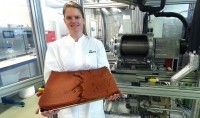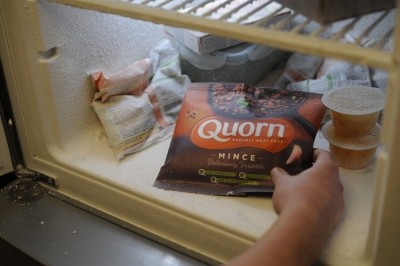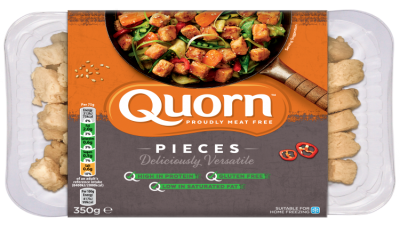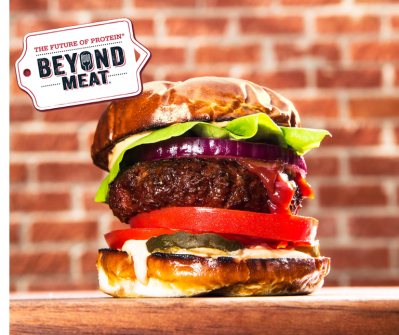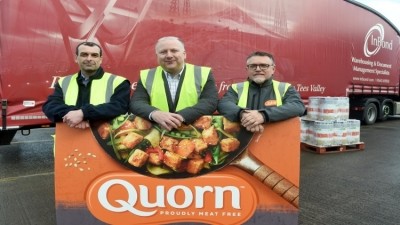FEATURE
Meat alternatives in boom: how firms can capitalise
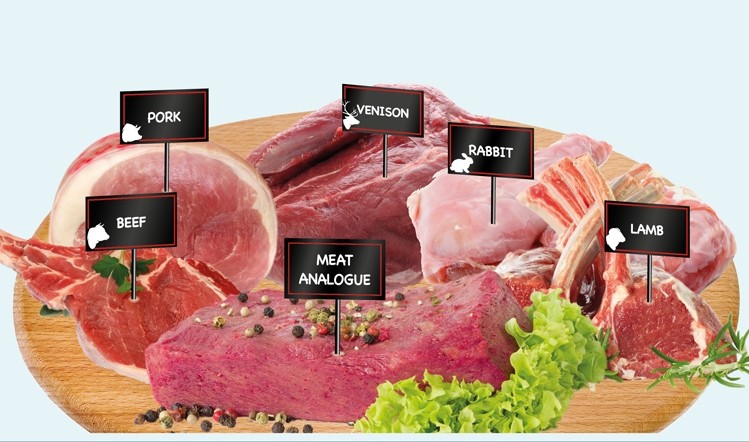
- A market with established names
- The shear cell technology process
- How the technique applies to pulse-based proteins
- Achieving the nutritional quality of milk and meat
- Shear cell’s impact on flavour
- Cost considerations
The ranks of vegetarians and vegans are swelling as more people turn away from meat. Some say their decision to switch is down to animal welfare – while for others, it’s part of a health kick or, increasingly, because of environmental concerns.
Whatever the reason, the strong performance of plant-based foods is difficult to ignore.
UK sales of meat substitutes are predicted to increase by 25% in five years, from £180M in 2016 to £225M in 2021, according to Informa’s Agribusiness Intelligence.
“The rise in vegetarianism as a lifestyle choice is a trend we are seeing across Europe,” says Peter Hendrikx, senior innovation springboard manager for Europe at Ingredion.
“In Germany, it is estimated that around 7.7M people are vegetarian, while in the UK, the number of vegans grew by more than 350% in a decade, numbering 542,000 in 2016.”
Despite this, real meat has enduring appeal and persuading consumers to opt for plant-based alternatives often means finding ways to help them swap without feeling deprived.
With that in mind, there is a clear need to develop effective meat analogues.
A market with established names (return to top)
There are already some well-established candidates. These include textured vegetable protein, which is a fibrous, extruded product primarily made from soy.
Then, there’s Quorn, which is a vat-grown mycoprotein, and seitan, which is derived from wheat gluten. Tofu and pea protein are other options.
There are, however, significant challenges around achieving a taste and texture that truly mimics meat.
A public-private research consortium based in the Netherlands is exploring technology for turning plant proteins into a fibrous material that resembles meat more closely.
Professor Atze Jan van der Goot and his team at Wageningen University and Research Centre are working with Delft University of Technology and a range of industrial partners on the Plant Meat Matters project. Participants include Ingredion, Givaudan and Unilever.
The shear cell technology process (return to top)
Plant Meat Matters is looking to use a physical process called shear cell technology. Developed at Wageningen, a shear cell is a device for testing how a powder or particle mixture flows.
The technique, recently scaled up to process batches of up to 7kg, has already proved successful with soy and wheat gluten.
When shear forces are applied to a soy-based or dairy material a fibril meat-like structure can be obtained, and one aim of the project is to find out which alternative proteins could achieve the same.
According to van der Goot, one idea is to pre-blend ingredients, or perhaps to use proteins that have not been as extensively purified as typical protein isolates.
“Finding out which particular proteins can be made to work is part of the investigation,” he says.
“Soy protein concentrate consists of protein and carbohydrate already. Maybe we should not totally purify other ingredients to protein isolates.”
How the technique applies to pulse-based proteins (return to top)
Ingredion’s involvement centres largely on its interest in pulse-based proteins and other functional ingredients. Pulses naturally contain between 20–25% protein, twice as much as traditional cereal crops.
“Working with the consortium, we can help to identify ways to formulate and process these plant-based proteins effectively to maximise their fibrous structuring potential.
“This will enable the development of alternatives that offer the same sensory eating experience as meat,” Hendrikx at Ingredion suggests.
“Upfront blending and pre-functionalisation of ingredients will be critical to achieve the desired results.”
Achieving the nutritional quality of milk and meat (return to top)
Nutrition is another reason to consider a wider range of protein sources, since the profile of amino acids in many plant-based proteins is different from the ‘gold standard’ of meat or dairy.
“The perceived nutritional quality of milk and meat protein is still a benchmark for the industry, as is replicating the eating experience, namely the taste and texture, of animal-based foods,” says Hendrikx.
“Although different types of plant protein vary in their nutritional makeup, they generally provide a rich source of protein, minerals, vitamins and dietary fibre, which makes them an attractive ingredient.
“By cleverly combining different types of plant proteins, it is possible to have a well-balanced amino acid profile and an overall nutritional quality similar to that offered by animal-based ingredients,” he adds.
Shear cell technology relies on physical processing, as van der Goot explains: “We apply simple shear flow between two parallel plates, one of which is moving. You can use such flow to get orientation in your material.”
That orientation creates fibres that approximate the complex structure of meat, which in turn is linked directly to the eating experience, says Hendrikx.
“Meat is fibrous on various length scales, including the nanometre scale. Its flavour components are gradually released upon chewing, offering taste experience for the duration of mastication.”
Shear cell’s impact on flavour (return to top)
So, texture is crucial, but what about flavour? Tackling that is a two-stage process, says van der Goot.
“Plant materials have a certain taste and it’s not meaty. First, you need to mask that, and then you add a meaty taste.”
There are four main flavour challenges in creating a ‘meaty experience’ using plant proteins, which Givaudan, as the flavour lead in Plant Meat Matters, is working on, confirms Dr Flavio Garofalo, its global business development manager for protein.
Conquering these will help achieve the overall aim of the partnership – to create a scalable and commercial ‘vegetable beef’ from plant protein, made to resemble real steak meat, not processed or ground meat, he says.
“The first two challenges relate to application and functionality – from understanding and designing flavours that can perform well in a high-protein matrix while undergoing significant thermal processing, to addressing the taste challenges of the base.”
The third and fourth challenges are all about enhancing the consumer experience via flavour and taste, for example, how to replicate species-specific cues and introduce the flavours associated with different culinary techniques.
“We are also using flavours to complement the physico-chemical approach taken by others in the consortium to enhance the fatty and juicy taste impression,” Garofalo adds.
Cost considerations (return to top)
In addition to the sensory challenges, van der Goot also highlights cost as another target for the project.
“Meat alternatives are relatively expensive. In the Netherlands, they cost the same as high-quality, organic meat. We hope the results from Plant Meat Matters will help us bring the costs down.”
As for the future, van der Goot says the batch process might lend itself as much to ‘scaling out’ as ‘scaling up’, thanks to the relative simplicity of the machinery compared with alternatives like extrusion.
“You could have a machine in a retailer, restaurant or an institution like a hospital, so you could make your own meat analogues on the premises,” he predicts.
